Rewilding is part of the solution in delivering restoration targets, therefore land managers, policymakers and funding organisations require transparent tools for prioritisation of where to set aside land for rewilding.
We developed a systematic rewilding prioritisation framework to enable systematic planning of rewilding.
We applied this framework across Denmark and produced prioritised lists of sites, which were then used as a tool in the political process of designating 15 rewilding sites across Denmark.
This study illustrates how to apply a systematic prioritising framework at the national level, supporting the delivery of national and international biodiversity strategies.

Article summary:
Trees are pivotal to global biodiversity and nature’s contributions to people, yet accelerating global changes threaten global tree diversity. We assessed the exposure to change in six anthropogenic threats over the last two decades for 32,090 tree species. We estimated that over half (54.2%) of the assessed species have been exposed to increasing threats. Only 8.7% of these species are considered threatened by the IUCN Red List, whereas they include more than half of the Data Deficient species (57.8%). These findings suggest a substantial underestimation of threats and associated extinction risk for tree species in current assessments. We also map hotspots of tree species exposed to rapidly changing threats around the world.
Figure: Hotspots of tree species that are highly exposed to each threat.
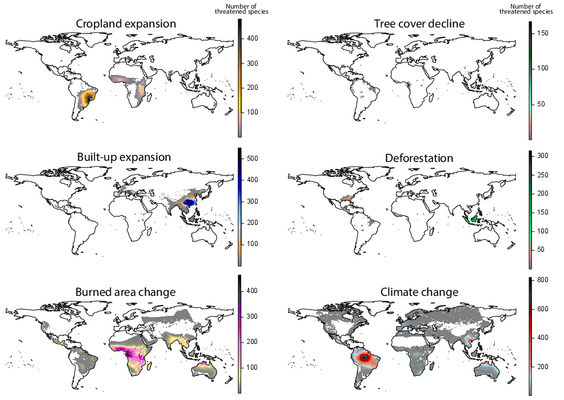
Link to layman summary of the paper
The article summed up:
Using genomic data and population genetics, we reconstructed population size trajectories of 139 living megafauna species, revealing a decline in population size for the majority of these species between 32,000 and 76,000 years ago.
Contrary to the hypothesis that the megafauna's decline was primarily due to climate change, we conclude that human activity has been a major driver of megafauna population sizes for at least 50,000 years.
As a consequence, megafauna census, biomass, and energy turnover have been reduced by 92–95% over the past 50,000 years.
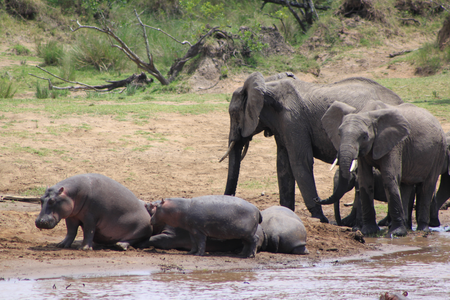
In Europe, the longstanding view that closed forests naturally would dominate under temperate climate conditions has been challenged by the hypothesis that large herbivores and other disturbance agents would have created a more open, wood-pasture landscape.
The choice of either (closed forest or wood-pasture) as a reference point for decision-making affects the output of contemporary management strategies. Yet, a wide-scale, quantitative assessment of vegetation structure in European landscapes before modern humans has previously been missing.
We used the pollen-based reconstruction method REVEALS to discern vegetation structure across Europe during the Last Interglacial period (129,000 – 116,000 years ago), before the arrival of Homo sapiens to the continent. We found that open and light woodland vegetation were prevalent features of the temperate forest biome, indicating a heterogeneous woodland landscape with substantial open elements.
These results challenge previous assumptions of a predominantly closed forest environment during interglacial periods. Our findings not only demonstrate the presence of diverse, open habitats but also highlight the importance of processes that uphold open environments, such as disturbances by large megafauna. This has important implications for our understanding of the evolutionary ecology of Europe’s native biota as well as for restoration and rewilding efforts within this biome and across the continent.
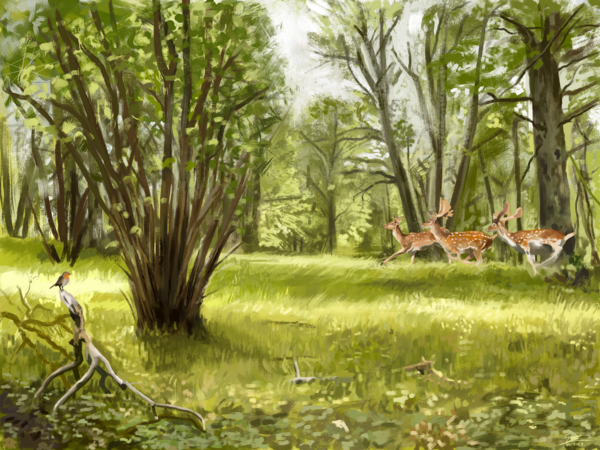
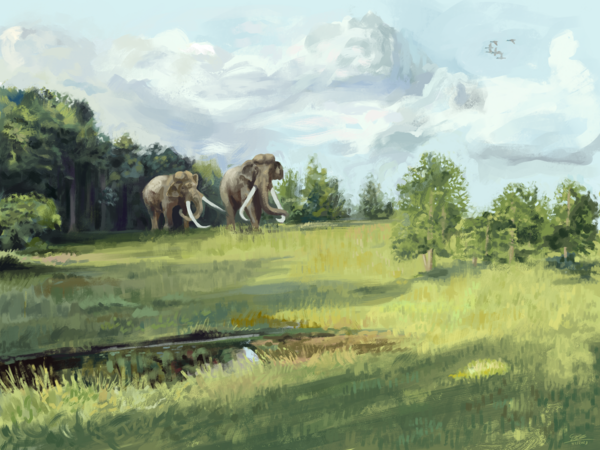
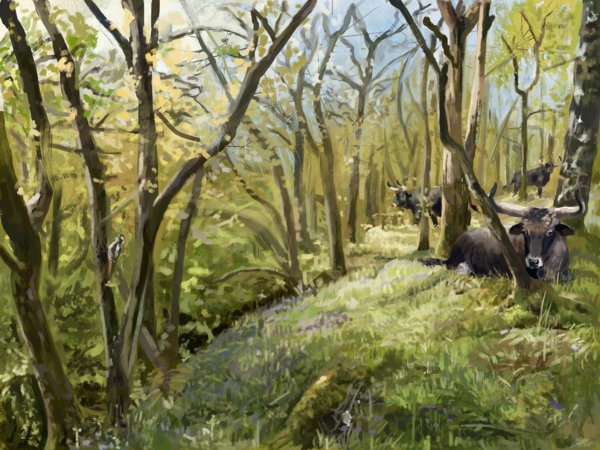
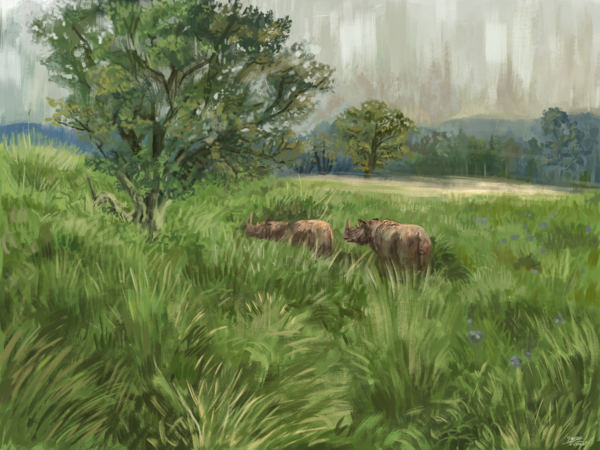
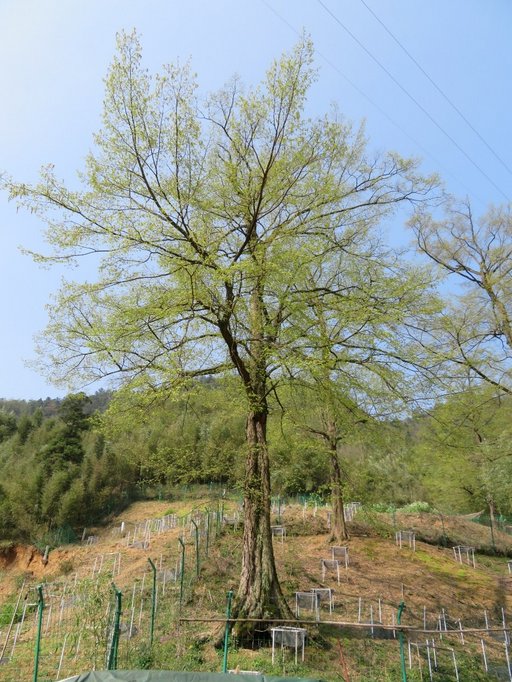
Link to paper: Climate change and land use threaten global hotspots of phylogenetic endemism for trees | Nature Communications
Across the world, tree species are confronting unprecedented anthropogenic pressures, heightening the risk of extinction, particularly for species with limited ranges and distinctive evolutionary histories. This crisis poses a grave threat not only to the global tree species diversity but also to the phylogenetic diversity of tree flora. In response to this looming threat, a comprehensive understanding of the geographical extent of the problem is imperative.
A recent Nature Communications study, conducted by an international team of researchers, utilizing a global dataset encompassing 41,835 tree species, representing an astonishing 65.1% of known tree species, has unveiled alarming insights into the challenges faced by tree species worldwide. “These findings emphasize the urgent need for concerted global conservation efforts to protect the phylogenetic diversity of trees and their vital ecosystems”, explain the study’s lead author, professor Wen-Yong Guo, School of Ecological and Environmental Sciences, East China Normal University.
Angiosperms and gymnosperms: Shaping phylogenetic endemism in different ways
The study found that the high phylogenetic endemism of tree species in tropical regions is primarily driven by angiosperm species. In contrast, gymnosperm species exhibit high phylogenetic endemism in more restricted areas, particularly in specific insular regions such as Tasmania and Japan, and southern China.
Historical climate stability and phylogenetic endemism hotspots for trees
“Both angiosperm and gymnosperm phylogenetic endemism hotspots are not only associated with current environmental conditions but also with long-term climate stability”, highlights the study’s senior author, Jens-Christian Svenning, professor and director of Danish National Research Foundation’s Center for Ecological Dynamics in a Novel Biosphere (ECONOVO), Aarhus University. These regions have maintained stable climatic conditions over millions of years, which have contributed to low extinction rates and the coexistence of ancient and recently diverged lineages. The research also emphasizes that mixed-endemism centers are the predominant type of endemism hotspots for both angiosperm and gymnosperm tree species. These mixed-endemism centers highlight the critical role of stable environments over long periods in preserving ancient lineages and facilitating the diversification of new lineages.
Global hotspots under threat
“Alarmingly, these phylogenetic endemism hotspots for trees are subject to relatively high anthropogenic pressure and are inadequately protected”, emphasizes professor Svenning. The study reveals that gymnosperm-only hotspots are entirely situated outside of existing protected areas and face even higher levels of human pressures.
Climate change poses a significant threat to tree phylogenetic endemism hotspots, particularly those associated with angiosperms and gymnosperms. Changing humidity and higher temperatures anticipated in the future make these centers more vulnerable to the impacts of climate change. The study warns that the magnitude and rapidity of climate changes could have adverse effects on Earth’s hotspots for tree phylogenetic endemism.
Conservation imperative and implications for biodiversity
“Our study shows that tree phylogenetic endemism hotspots face higher levels of threat from human land use than non-hotspots, and this underscores the urgent need to address these threats and prioritize conservation efforts”, concludes professor Guo. He continues, “Climate change poses a further significant challenge to the long-term persistence and ecological functioning of these unique ecosystems, necessitating the integration of climate change forecasts into the placement and management of protected areas as well as additional conservation measures for trees”.
The study's findings also suggest that the protection of tree species has broader implications for biodiversity preservation, as tree species provide suitable habitats for other organisms. The study underscores the utility of tree-targeted conservation activities, including expanding protected areas and addressing human-induced pressures, in preserving biodiversity more broadly and maintaining entire ecosystems.
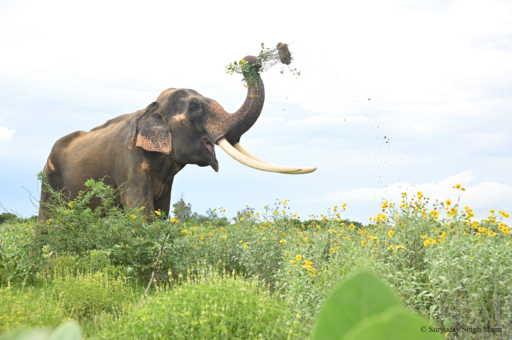
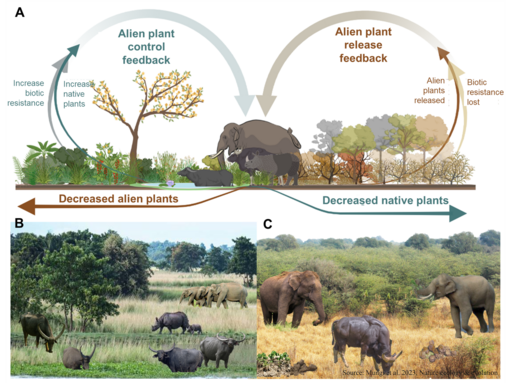
Ninad Avinash Mungi, Yadvendradev V. Jhala, Qamar Qureshi, Elizabeth le Roux and Jens-Christian Svenning
Link to paper in Nature Ecology & Evolution (Nat Ecol Evol)